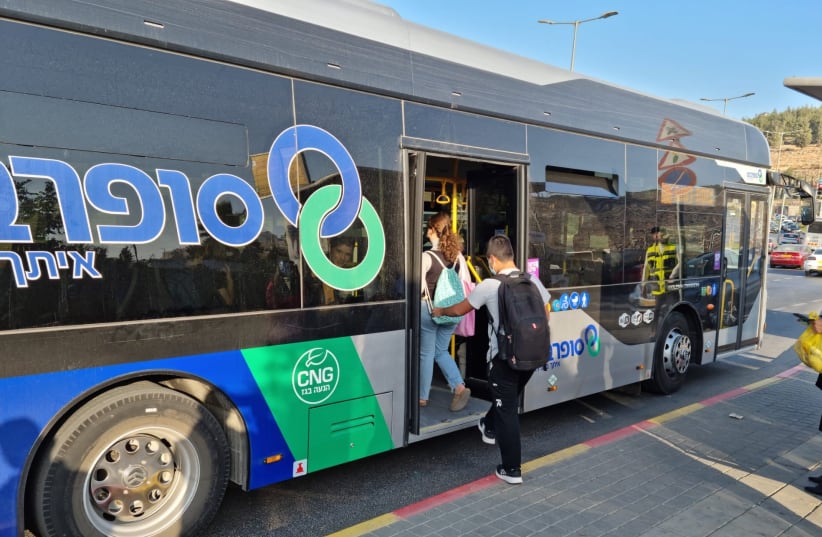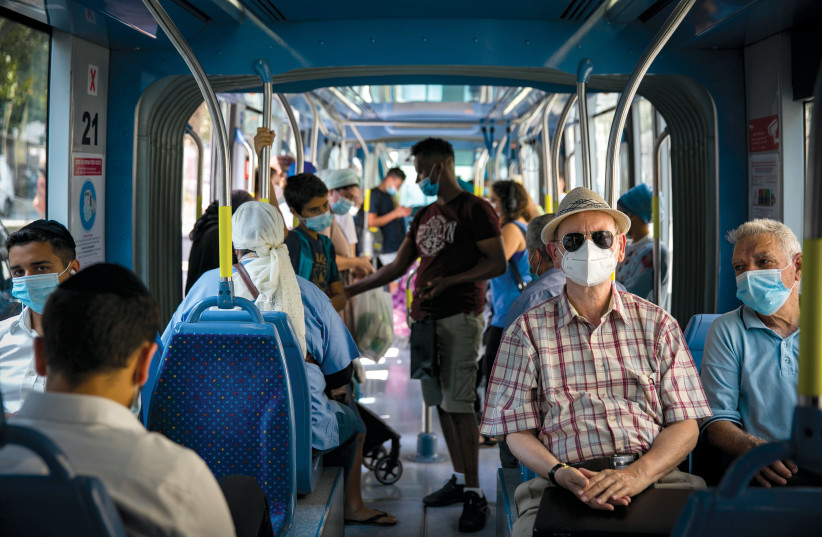Jerusalem may be the city with the strongest conflicting messages – not just poetic or theological, but sometimes from the municipality. Since the mayor took office, the directives from Safra Square are that public transportation should be preferred and the use of private vehicles minimized.
The city wants to reduce traffic jams and has also established low-emission zones to stop polluting vehicles from entering the capital. But the policy and the reality on the ground differ. While most of the city has become one big construction site, mainly because of the infrastructure works for the new light rail lines, the municipality sets up a new parking lot almost every week, usually offering subsidized prices – leaving us, the residents, perplexed regarding which path to choose.
So what should the average Jerusalemite take to get to the office or school? A bus? The light rail? Both? The car, while being prepared to be stuck in a traffic jam for an unacceptably long time? Or perhaps one of the bicycles being offered at several points across the city, getting around also while getting exercise? But then again, is that reasonable in the winter? Not to mention the capital's topography, which makes riding a bicycle difficult.
Most residents understand and admit that in such a big city renouncing the use of private cars and progressing to public transportation is the right thing to do. But is that option a reliable one? Is the Jerusalem of 2022 ready for such a significant change in habits?
But let’s see, first of all, what is available in terms of public transportation. In Jerusalem checked the state of the entire array of public transportation options – light rail, buses and private bus services recently added to the city. What are the advantages, disadvantages and, above all, what is still waiting to be improved?
First, two major changes occurred: light rail operator CityPass left (the company actually disbanded), and no less important, about a year ago, Egged’s monopoly in the city was broken. In other words, the light rail system is no longer based on a private company owning and operating the system, but is now based as a franchisee – currently the Cfir company – operating the service according to the Transportation Ministry’s rules.
As for Egged, it is no longer the sole provider of municipal bus lines. Another company, Superbus, has started operating alongside it. After years of discussions between Egged and the ministry, when it was clear that no improvement in its service was coming, the ministry agreed to take the required step and issued a tender to operate additional lines in the city. Among the problems that made it difficult for Egged to function was a constant shortage of drivers, which caused unreasonable delays in schedules.
Today, Jerusalem, the country's largest city, has a more reasonable mass transit system, although there is still a lot of work ahead of us.
Superbus has added a few new lines, but has also replaced some existing Egged lines, and, perhaps the most central change: some of the new lines run by Superbus are express lines – meaning they use Begin Road instead of riding through the city center, saving a lot of time for passengers.
But – far from being the only obstacle on the way to maximizing the advantages of a highway inside a city – the Begin is still waiting for a public transportation lane (a decision made by the ministry and integrated in the Jerusalem Transportation Master Plan more than a year ago but still not implemented). So while time is indeed saved on these express lines, a lot is still wasted when the road is congested during rush hour, negating the benefit for bus passengers.
Yossi Saidov, founder and first CEO of 15 Minutes, an organization that monitors and tests public transportation services, says that while some improvement can clearly be seen, too many of the challenges and lack of logic in decision-making still exist, affecting all of us.
“First of all,” says Saidov, “with the new operator for the light rail, we have a system that is not dedicated to feed the railway in order to save the company’s interest, but a rather reasonable network of lines that is designated to serve the passengers. It may not sound like that but this is a tremendous change for the better.”
Saidov stresses that one of the problems with residents adapting to the use of increased public transportation is the addition of parking lots almost everywhere. “Wow! How can we expect residents to stop using their private cars inside the city when the municipality adds more parking?
“Take a look at Tel Aviv, where the commonly accepted paradigm is that only rich people use private cars and public transportation is for the less privileged – and it’s exactly the opposite there.
“According to a recent survey by Makor Rishon, while only 12.5% of Tel Aviv residents use their cars, in Jerusalem, the so-called poorest city, 25% of residents still use their cars. Why not? They have plenty of parking here. While in Tel Aviv, the municipality not providing more parking led to the most logical result of avoiding the use of private cars.”
But there is more, says Saidov. “The express lines added with the entry of other companies have completely changed the focus of Jerusalem's transport map – the function of a bus is now to drive a passenger from one point to another in this large city in the shortest and best way, period. It means they use alternative paths, use Begin Road – something that didn’t happen for years here. Today, for example, a resident of East Talpiot can take the 531 line, which will bring them to Shaare Zedek Medical Center in a relatively short time. That’s what I call improvement – it means the needs of the residents and the passengers are at the center of priorities.”
Asked about the fact that these new lines sometimes still require transfers along the way, Saidov says he doesn’t see a problem: “Have you ever heard of a big city abroad where a passenger doesn’t have to change lines at least once... to get from point A to point B? Of course we will have to transfer on the way, but as long as these changes are done in a logical way and, above all, do not waste too much of our time – that’s fine with me. We are talking about mass transportation in the biggest city in Israel.”
However, Saidov points to some problems still awaiting solutions. “Some of these new lines still don’t have enough stops along the city’s largest roads. You may find a line that would be the best for your needs, but if you step on it, you won’t be able to get off until its last stop. Why? Because the authorities in charge [the municipality, Transportation Ministry and Master Plan] all have the same bad habit: they do not speak to each other and coordinate.” (The Jerusalem Transportation Master Plan team did not respond to In Jerusalem’s inquiries by press time.)
“Take another example, the electronic signboards at the stops, at bus stops but sometimes also the light rail. There is no connection at all between what appears on these signboards and the reality on the ground. For most of us, they are just an ornament, since we use applications that can tell us exactly when the next bus is arriving. But what about seniors who may not be able to use these devices?”
AS FOR the changes on the ground, here is the list of the new lines that are now operated by Superbus: 531, 2, 91, 506 and 504.
Lines 504, 506, 531 are express lines. Line 531 runs from Gilo through the Malha Mall to the International Convention Center and Central Station.
Line 163 runs from the ICC to Rachel’s Tomb through Bar-Ilan, Shmuel Hanavi and Shivtei Israel and along the entire Hebron Road.
The second is Line 77, which travels from French Hill, through Givat Hamivtar, Mea She’arim, the city center, Emek Refaim, Ben-Zakkai Street, Pat junction and ending at Malha.
The already existing lines are: 74, 75, 77, 163, 136, 88, 38, 82 and 83. There are no changes in their routes but Egged is not operating them anymore.
“These changes will lead to the use of newer buses and a decrease in air pollution, because most of the Superbus fleet in Jerusalem consists of gas-powered buses that have lower emissions than diesel-powered buses,” a spokesman for Superbus said.
Last but not least, all Superbus buses employ environmentally friendly hybrid technology. In that regard, Saidov points out that again, there are good intentions, but facts on the ground need to line up.
“For now,” explains Saidov, “there are not enough charging stations in the city.”


